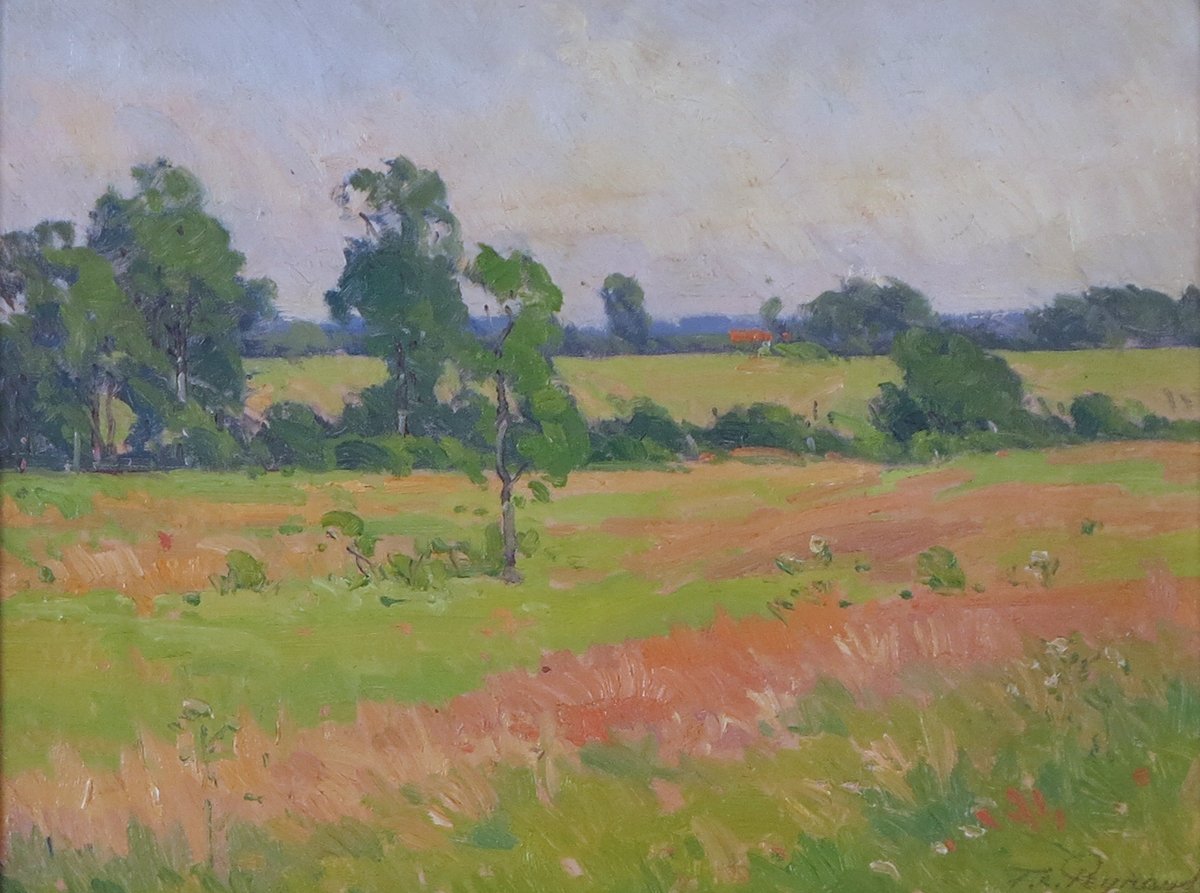Artists
Frank Peyraud
American, 1858–1948A hard-working fine-art painter, muralist and panoramist, Frank Peyraud earned a lasting reputation for rural landscapes, especially snowscenes in broadly defined forms and glowing colors. Excepting a trip from 1921 to 1923 to Italy and Switzerland, he was based in Chicago, where a Registrar of the Chicago Art Institute in a materials for a traveling exhibition, described him as the “dean of Chicago landscape artists.” (Richter)
Peyraud was one of the first American painters to focus on Midwestern landscape, and did many river and farm scenes including his signature snowscapes. Many of his paintings reflected Impressionism, an abstract style executed with rapid technique and broken brush strokes brought over from France towards the end of the 19th Century. Impressionism received much attention in Chicago in some of the artwork exhibited at the 1893 Exposition.
Of Peyraud and Impressionism, it was written that “he was the most successful of the progressive Chicago painters who experimented with impressionist approaches in the years following Exposition.” He was credited with more discipline of execution than many of his peer impressionists and with a “valid impressionism”, (Greenhouse) that conveyed poetic interpretations to what many persons regarded as very ordinary rural Illinois landscape. His snowscene haystack painting, Winter Light on the Farm, in the Marshall Collection of Peoria and exhibited at the Terra Museum, shows “crystalline atmosphere and fleeting light of a waning winter afternoon”. (Greenwood) and seems to reference the serial haystack paintings by Claude Monet.
Many of Peyraud’s works had luminous back-lighting, and careful arrangement of contrasting shapes and a tone inviting the viewer into a “slightly enchanted world into which quotidian human elements rarely intrude.” (Richter) Peyraud was born in Bulle, Switzerland, and enrolled as an architecture student at the Ecole des Beaux Arts in Paris. In 1881, at age 22 and an established architect in France, he emigrated to Chicago where he spent the remainder of his career. He found employment there as a cyclorama painter, which meant creating huge panoramic paintings in the round, “forerunner of the wide-screen motion picture.” (Richter). In 1891, he became involved in retouching Paul Phillipoteaux’s panorama, The Battle of Gettysburg, when it came to Chicago for exhibition He continued to work on panoramic and cycloramas spectacles including The Creation for the 1903 Louisiana Exposition. Spring Painted Desert in the Santa Fe Railroad Collection shows at least one trip West.
Peyraud also did mural painting, several of them in Peoria, Illinois including a series of allegorical murals with Hardesty Maratta in the Peoria at the newly-built Public Library. In Peoria, he also taught classes and gave lectures. In 1906, he married Elizabeth Krysher, a portrait painter and illustrator.


